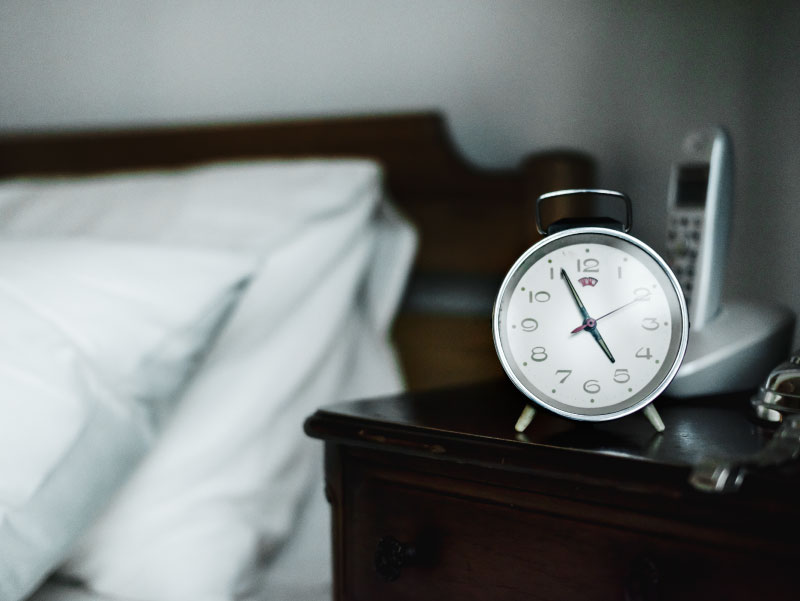Can daylight saving time hurt the heart? Prepare now for spring
By American Heart Association News

Autumn temperatures may have just arrived, but it's already time to "fall back" an hour.
For people who have heart-related problems, they may want to apply that extra 60 minutes in their day toward making healthier lifestyle changes. That's because researchers say when daylight saving time returns, it brings with it a higher chance of having a stroke or heart attack.
Nov. 4 marks the end of daylight saving time, which was created as a way to save fuel during World War I. The United States formally adopted the practice in 1918, hopeful it would encourage consumers to take advantage of the extra sunlight to go shopping or just be outdoors more.
Hawaii and Arizona (aside from the Navajo Nation) are the only states that don't observe daylight saving time. Other states hope to join them. California voters decide in November whether to eliminate the time change. In Florida, the state legislature approved a law to do away with the switch. Congress, however, has final say on whether any such change can happen.
Critics of daylight saving time say the practice is outdated. Many scientists say it's also dangerous – at least around the time when clocks "spring forward" and rob most of the population an hour of precious sleep.
The risk of having a stroke goes up 8 percent during the first two days after the beginning of daylight saving time, according to one Finnish study.
In Sweden, researchers found an average 6.7 percent greater risk of heart attack in the three days after the spring change. Inspired by that finding, a group of U.S. researchers conducted their own study and determined that heart attack risk jumped 24 percent the Monday after switching over to daylight saving time. That risk then tapered off over the remainder of the week.
By contrast, risk for heart attack dropped 21 percent on the Tuesday after the fall time change.
The study did not indicate what could be causing the additional heart attacks, but most of the patients were already vulnerable to heart disease, said Dr. Hitinder Gurm, an interventional cardiologist and one of the U.S. study's authors.
"The people who have heart attacks are the same people who would have a heart attack without the time change," said Gurm, the associate chief clinical officer at the University of Michigan. "It's mostly people who have high blood pressure or diabetes. Generally, their risk factors are not under control."
A combination of those risk factors and the disruption to the body's internal clock, or its circadian rhythm, may be enough to throw the entire body off balance, said Michael Grandner, director of the Sleep and Health Research Program at the University of Arizona in Tucson.
"If you look under the car hood, you see lots of belts and gears and pistons and all sorts of parts that have their own rhythms, but which are related to each other," he said. "The body has lots of similar rhythms, so anything from the rhythm of your blood pressure, to the rhythm of your body temperature, your hormones, how you metabolize blood sugar or consolidate memories. All of these systems are within the same body and many are at least indirectly related to each other."
When daylight saving time kicks in, the process artificially changes the external environment without adjusting the body's internal clock, essentially giving the body jet lag, Grandner said. The body then needs to reset and synchronize its internal systems.
"But when you get people who are ill or who already have some hormonal disruption or other biological problem that depends on a clock, that's where you get problems," he said. "It's why you have things like a heart attack. There's a rhythm to heart function, and when all of a sudden you jostle that rhythm for a heart already very sensitive or diseased or struggling to stay healthy, you disrupt its ability to regulate itself properly for a day or so."
Daylight saving time resumes on March 10, 2019. Grandner said people can prepare for the spring shift, mainly by gradually winding down earlier at night a few days before the time change.
Gurm suggested preparing now – and by making bigger lifestyle changes.
"You have the whole winter to prepare for the spring change, so get in shape, get your cholesterol checked, get your blood pressure checked," he said. "Don't smoke, eat a heart-healthy diet. And to that, I would add, make sure you get enough sleep."
If you have questions or comments about this story, please email [email protected].





